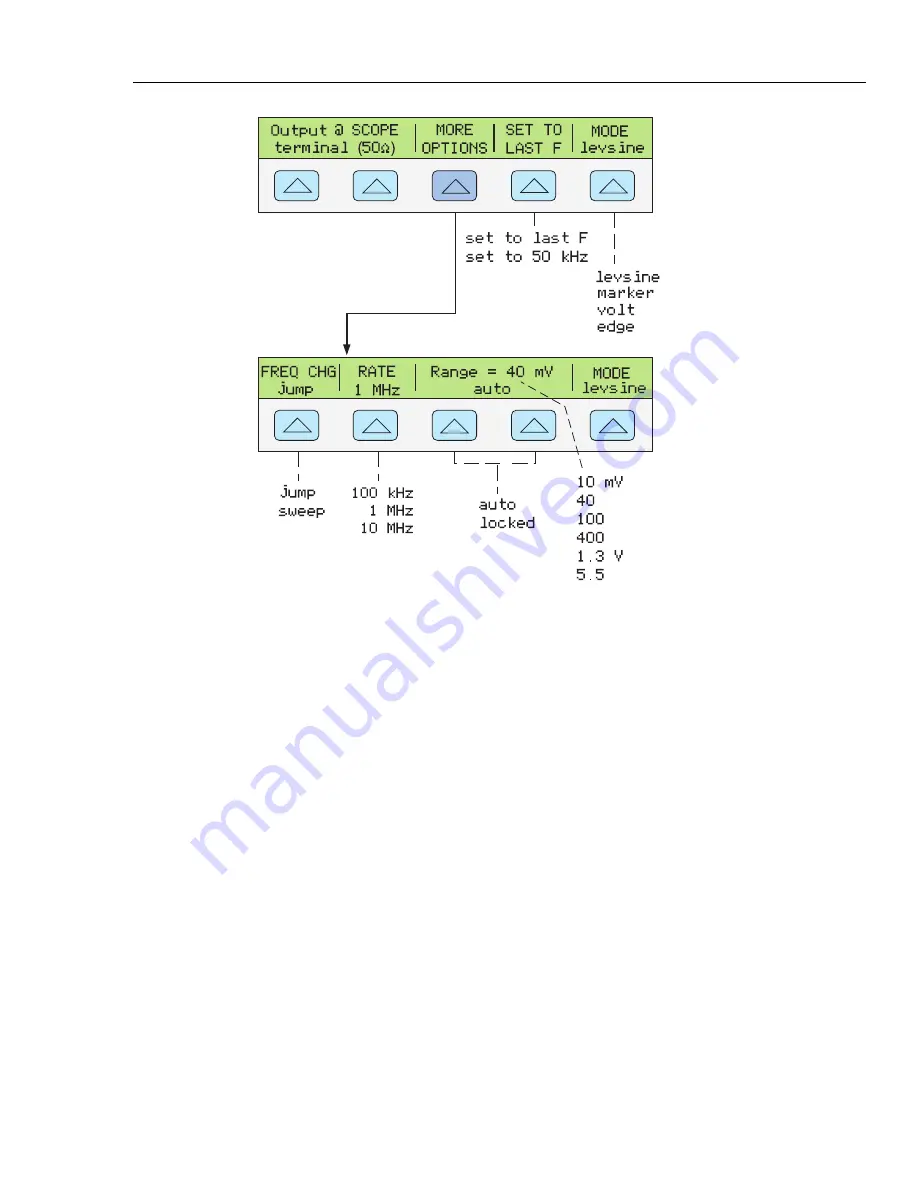
Scope Calibration Option
Calibrating the Pulse and Frequency Response on an Oscilloscope
13
gjm007.eps
Each option in the MORE OPTIONS menu is described below.
•
FREQ CHANGE
Toggles between two settings that control the way the output
signal adjusts to a new frequency. This is the default setting.
“Jump” causes the output signal to jump immediately to a new frequency setting.
“Sweep” causes the signal to sweep through a series of frequency values, over a
range you set. Use the sweep function to watch the signal gradually change over a
given bandwidth and see the point at which its amplitude changes. Details for using
the sweep function are provided under “Sweeping Through a Frequency Range.”
•
RATE
Used when FREQ CHANGE is set to “sweep” to toggle the sweep speed
amoung 100 kHz, 1 MHz, and 10 MHz.
The slow sweep rate lets you watch the frequency change very slowly. After a fast
sweep, you may want to pinpoint a certain frequency with a slow sweep over a subset
of your previous frequency range.
•
RANGE
The softkeys toggle between two settings: “auto,” which adjusts the range
limit automatically in accordance with the voltage level, and “locked,” which sets the
available voltages to one range.
There are six range limits in Levsine mode: 10 mV, 40 mV, 100 mV, 400 mV, 1.3 V,
and 5.5 V. When set to “auto” the calibrator uses your voltage setting to
automatically set the range limit that provides the most accurate output. When set to
“locked” the range limit remains fixed and you can decrease the voltage down to 0 V
within any range limit.
For example, assume the range limit is 40 mV. If you set the 40 mV range to “auto”
and then enter 1 mV, the calibrator will adjust the range limit to 10 mV and will
output 1 mV from within the 10 mV range. If you set the 40 mV range to “locked”
riešenia na presné meranie
http://www.elso.sk
















































